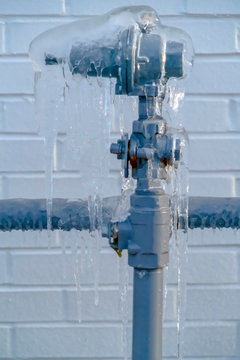Guidance for Preventing Frozen Pipes in Winter: Professional Insights
Guidance for Preventing Frozen Pipes in Winter: Professional Insights
Blog Article
Each person seems to have their own thinking involving How to prepare your home plumbing for winter weather.

Winter can wreak havoc on your pipes, specifically by freezing pipelines. Right here's just how to stop it from occurring and what to do if it does.
Introduction
As temperature levels drop, the risk of icy pipes boosts, possibly leading to costly fixings and water damages. Comprehending exactly how to prevent icy pipelines is vital for home owners in chilly environments.
Understanding Frozen Pipes
What causes pipes to ice up?
Pipes ice up when subjected to temperature levels below 32 ° F (0 ° C) for extended periods. As water inside the pipes ices up, it increases, putting pressure on the pipe walls and possibly triggering them to break.
Threats and problems
Icy pipelines can lead to water system disturbances, property damages, and costly fixings. Burst pipelines can flood homes and create considerable structural damage.
Indications of Frozen Pipeline
Identifying frozen pipelines early can stop them from bursting.
Just how to determine icy pipelines
Look for reduced water circulation from faucets, uncommon odors or noises from pipelines, and noticeable frost on revealed pipelines.
Avoidance Tips
Shielding vulnerable pipelines
Wrap pipes in insulation sleeves or use warmth tape to secure them from freezing temperatures. Focus on pipes in unheated or outside locations of the home.
Home heating methods
Keep interior areas properly heated up, especially locations with plumbing. Open up cupboard doors to allow warm air to distribute around pipes under sinks.
Securing Outside Pipes
Garden hose pipes and outside faucets
Detach and drain garden hoses prior to winter season. Mount frost-proof spigots or cover outdoor faucets with shielded caps.
What to Do If Your Pipelines Freeze
Immediate activities to take
If you presume icy pipelines, maintain faucets open up to ease stress as the ice melts. Utilize a hairdryer or towels soaked in warm water to thaw pipes gradually.
Long-Term Solutions
Architectural adjustments
Take into consideration rerouting pipelines away from exterior wall surfaces or unheated locations. Add additional insulation to attic rooms, basements, and crawl spaces.
Updating insulation
Invest in top quality insulation for pipes, attics, and wall surfaces. Appropriate insulation aids keep regular temperatures and lowers the risk of frozen pipelines.
Final thought
Stopping frozen pipes calls for aggressive steps and fast feedbacks. By understanding the reasons, signs, and safety nets, property owners can shield their plumbing during cold weather.
6 Proven Ways to Prevent Frozen Pipes and Protect Your Home
Disconnect and Drain Garden Hoses
Before winter arrives, start by disconnecting your garden hoses and draining any remaining water. Close the shut-off valves that supply outdoor hose bibs and leave the outdoor faucet open to allow any residual water to drain. For extra protection, consider using faucet covers throughout the colder months. It’s also important to drain water from any sprinkler supply lines following the manufacturer’s directions.
Insulate Exposed Pipes
Insulating your pipes is an effective way to prevent freezing. Pipe insulation is readily available at home improvement stores and is relatively inexpensive. Pay close attention to pipes in unheated areas such as the attic, basement, crawl spaces, or garage. Apply foam insulation generously to create a buffer against the cold. You can also wrap your pipes in heat tape or thermostat-controlled heat cables for added warmth.
Seal Air Leaks
Inspect your home for any cracks or openings that could let in cold air. Seal any holes around the piping in interior or exterior walls, as well as the sill plates where your home rests on its foundation. Additionally, make sure to keep your garage door closed unless you’re entering or exiting. Leaving it open creates a significant air leak that can lead to frozen pipes.
Allow Warm Air Circulation
During cold snaps, it’s essential to allow warm air to circulate evenly throughout your home. Leave interior doors ajar to promote better airflow. Open kitchen and bathroom cabinets to help distribute heat consistently around the rooms. If you have small children or pets, be sure to remove any household chemicals or potentially harmful cleaners from open cabinets for safety.
Let Faucets Drip
A small trickle of water can make a big difference in preventing ice formation inside your pipes. When temperatures drop significantly, start a drip of water from all faucets served by exposed pipes. This continuous flow helps prevent the water from freezing. Additionally, running a few faucets slightly can relieve pressure inside the pipes, reducing the chances of a rupture if the water inside does freeze.
https://choateshvac.com/6-proven-ways-to-prevent-frozen-pipes-and-protect-your-home/

Hopefully you enjoyed our piece on How to prepare your home plumbing for winter weather. Thanks for spending some time to read through our article post. Sharing is nice. Helping others is fun. I truly appreciate reading our article about How to prepare your home plumbing for winter weather.
Request Estimate Report this page